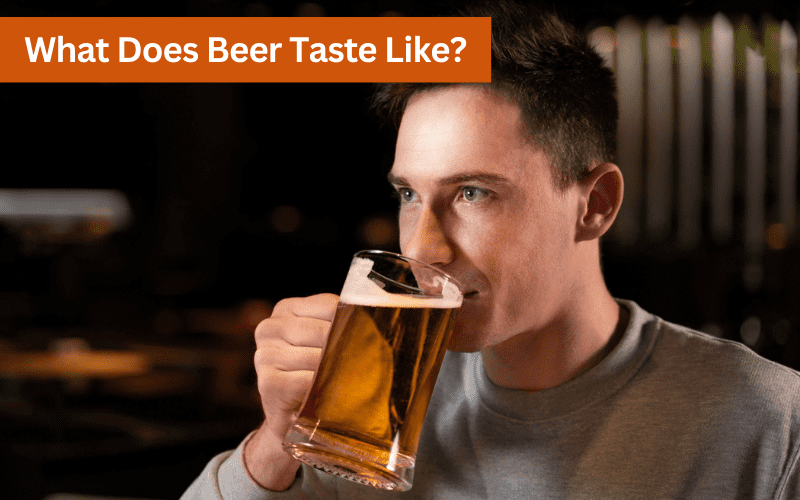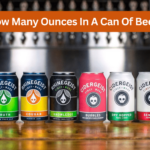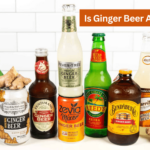What does beer taste like? This is a question that has puzzled many, and one that I found myself asking when I first started drinking beer. As a newcomer to the world of beer, I was surprised to find that there were so many different types, each with their own unique flavor profiles. From light lagers to hoppy IPAs, there seemed to be no end to the variety. But with each new sip, I began to understand the complexities of beer and appreciate the nuances of its taste. Join me as we explore what does beer taste like and unravel the mystery behind this beloved beverage.
What Is Beer?
Beer is a popular alcoholic beverage made from water, malted barley, hops, and yeast. It is one of the oldest and most widely consumed drinks in the world, with a rich history dating back thousands of years. Beer comes in a variety of styles, each with its own distinct flavor profile, color, and aroma. The brewing process involves several steps, including mashing, boiling, fermenting, and aging, which contribute to the unique taste of each beer. With so many different types of beer available, there is something for everyone to enjoy.
Does Beer Even Taste Good?
Whether or not beer tastes good is a matter of personal preference. Some people love the taste of beer, while others find it unpleasant. The taste of beer can vary greatly depending on the style, ingredients, and brewing process used, so it’s important to try different types to find one that suits your tastes.
Some people enjoy the bitterness of hoppy IPAs, while others prefer the sweetness of a Belgian dubbel or the tartness of a sour beer. Ultimately, whether or not beer tastes good is a subjective matter, and what one person finds delicious, another may not enjoy at all.
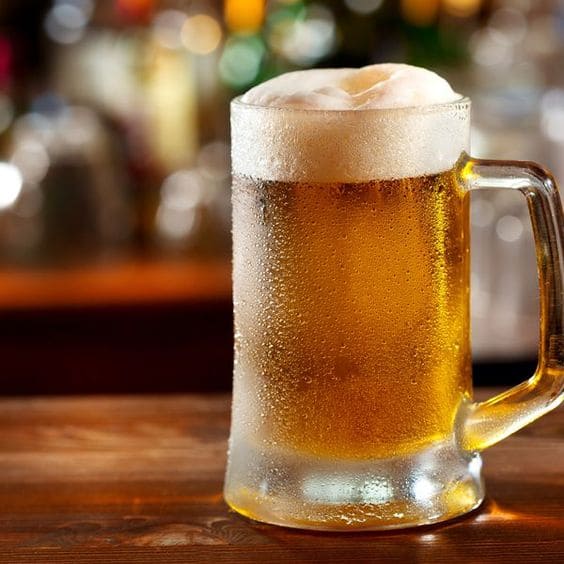
What Does Beer Taste Like?
Beer can have a wide range of taste profiles, depending on the style, ingredients, and brewing process used. Here are some of the most common flavors and characteristics found in beer:
- Sweetness: Does beer taste sweet? Some beers have a sweet taste due to the use of malts, which provide flavors of caramel, toffee, and chocolate.
- Bitterness: Hops are responsible for the bitterness in beer, which can range from mild to very bitter depending on the type of hops used and when they are added to the brewing process.
- Sourness: So, what does sour beer taste like? Sour beers are becoming increasingly popular, with tart and acidic flavors that are often compared to sour candy or citrus fruits.
- Creaminess: Some beers, particularly stouts and porters, have a creamy or smooth mouthfeel due to the use of roasted malts or oats.
- Maltiness: Malts are the backbone of beer and provide flavors ranging from bread-like to nutty or even smoky.
- Fruitiness: Some beers contain fruit flavors or are brewed with actual fruit, which can add sweetness and acidity to the taste.
- Spiciness: Some beer styles, such as Belgian saisons or witbiers, are brewed with spices such as coriander, orange peel, or clove, which can add a unique spiciness to the taste.
Overall, beer can be a complex and multifaceted drink, with a wide range of flavors and characteristics that can appeal to a variety of tastes.
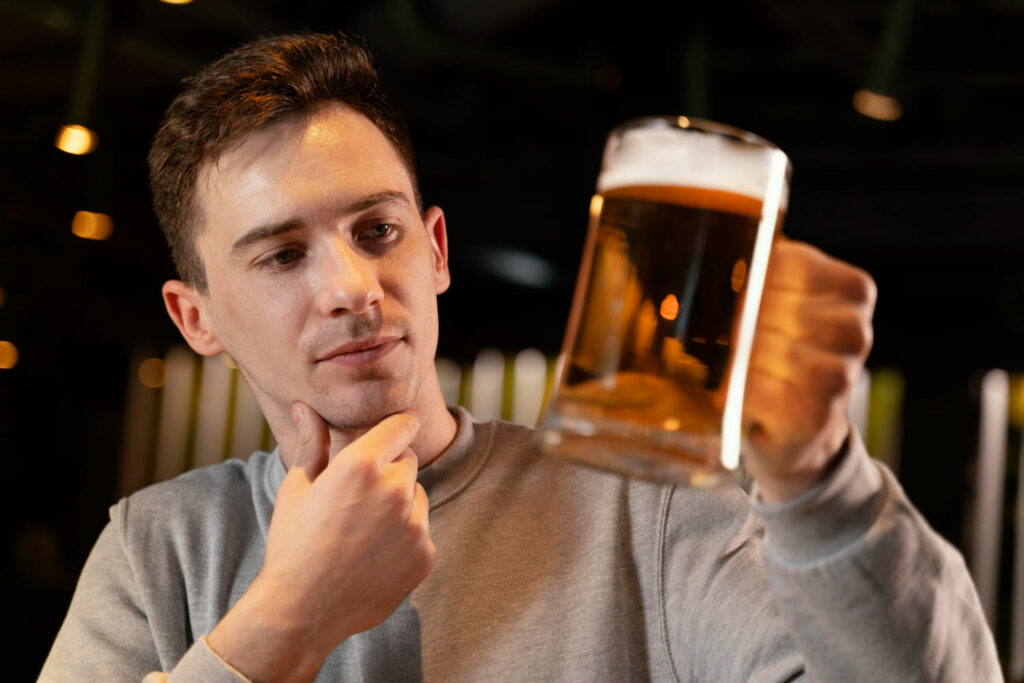
Different Beer Styles
Understanding the different beer styles is essential to appreciate the wide range of flavors and characteristics that beer has to offer. While there are many variations within each style, here are some of the most common:
Ales
Ales are a type of beer that are fermented using a warm yeast and are typically brewed using top-fermenting strains. They tend to have a more complex taste than lagers, with a range of flavors and aromas depending on the specific style.
What does ale taste like?
Ales can have a wide range of flavors, but some common characteristics include a fruity or spicy taste, a slight bitterness, and a full-bodied mouthfeel. Some ales can also have a malty or caramel-like sweetness, while others have a dry, hoppy finish.
Characteristics of ales
Characteristics of ales can vary depending on the style, but some general characteristics include:
- Brewed using top-fermenting yeast strains
- Fermented at warmer temperatures than lagers
- Generally have a higher alcohol content than lagers
- Have a more complex flavor profile than lagers
- Can be served at a wide range of temperatures
Examples of popular ales
- Pale ales: A hop-forward beer with a crisp, bitter finish
- Brown ales: A malty beer with nutty, caramel flavors
- Belgian ales: A fruity and spicy beer with a dry finish
- Scottish ales: A malty beer with a slightly sweet taste and a low hop profile
Lagers
Lagers are a type of beer that are fermented at cooler temperatures using bottom-fermenting yeast strains. They are known for their crisp, clean taste and are the most commonly consumed beer worldwide.
What does lager taste like?
Lagers are typically light and refreshing, with a crisp taste and a clean, smooth finish. They are often described as having a “bready” or “cracker-like” taste, with a subtle sweetness and low bitterness.
Characteristics of lagers
- Brewed using bottom-fermenting yeast strains
- Fermented at cooler temperatures than ales
- Generally have a lower alcohol content than ales
- Have a clean, crisp taste with a smooth finish
- Can be served at colder temperatures than ales
Examples of popular lagers
- Pilsners: A pale lager with a crisp, clean taste and a mild hop profile
- Helles: A German-style lager with a slightly sweet taste and a smooth finish
- Bocks: A stronger, maltier lager with a slightly sweet taste and a smooth finish
- Dunkels: A dark lager with a malty, slightly sweet taste and a low hop profile
Stouts and Porters
Stouts and porters are dark beers that are brewed using roasted malts, giving them a distinct flavor and aroma. While stouts and porters are similar in many ways, stouts tend to be stronger and more full-bodied than porters, with a thicker mouthfeel and a higher alcohol content.
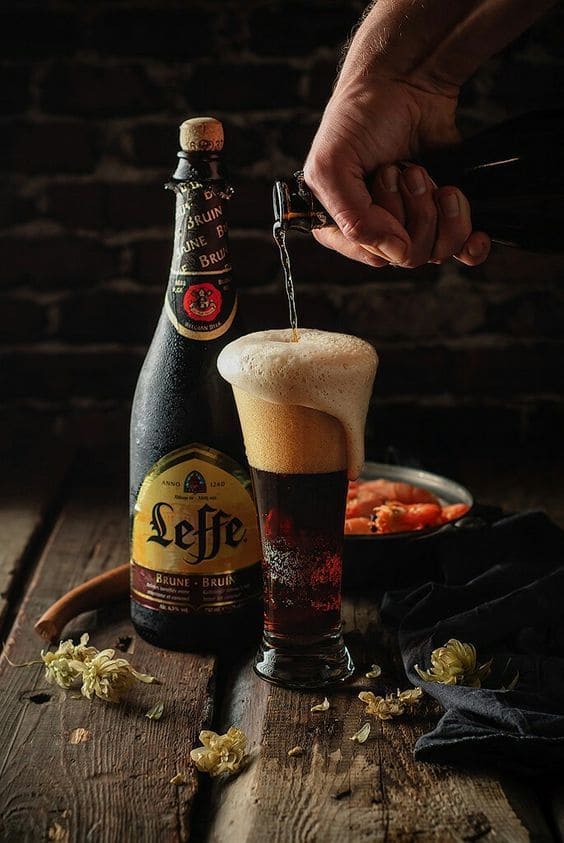
Characteristics of stouts and porters
- Dark color: Stouts and porters are typically dark brown or black in color, with a creamy head.
- Roasted flavor: Roasted malts give stouts and porters a rich, coffee-like flavor with notes of chocolate, caramel, and even smoke.
- Full-bodied mouthfeel: Stouts and porters have a thicker, creamier mouthfeel than other beers, with a smooth and silky texture.
- Low carbonation: Stouts and porters have lower carbonation levels than other beers, which contributes to their smooth mouthfeel.
Examples of popular stouts and porters
- Guinness: What does Guinness taste like? A dry Irish stout with a creamy head and a smooth, roasty flavor, having malty sweetness and a hoppy bitterness
- Chocolate Porter: A sweet, malty porter with a rich chocolate flavor.
- Russian Imperial Stout: A strong, full-bodied stout with a high alcohol content and a complex flavor profile.
- Milk Stout: A sweet, creamy stout made with lactose, a type of sugar derived from milk.
- American Porter: A hoppy, full-bodied porter with a strong roasted flavor.
IPAs
IPAs, or India Pale Ales, are a popular style of beer that are known for their strong hoppy flavor and bitterness. They are typically light in color and have a high alcohol content, making them a popular choice among beer enthusiasts.
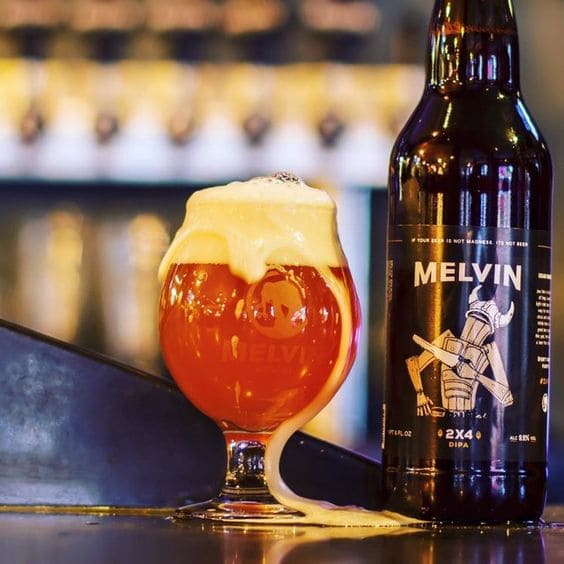
What does ipa taste like?
IPAs are characterized by their hoppy taste and bitterness, which can range from mild to very strong depending on the specific style. They often have a floral or fruity aroma and can have a crisp, dry finish. Some IPAs also have a malty sweetness to balance out the bitterness of the hops.
Characteristics of IPAs
- High hop content: IPAs are brewed with a high amount of hops, which gives them their characteristic bitterness and flavor.
- Light color: IPAs are typically light in color, ranging from pale yellow to amber.
- High alcohol content: IPAs often have a higher alcohol content than other beers, ranging from 6-8% ABV or higher.
- Floral or fruity aroma: The hops used in IPAs can give them a floral or fruity aroma, with notes of citrus, pine, or tropical fruit.
Examples of popular IPAs
- West Coast IPA: A highly hopped, bitter beer with a crisp, dry finish.
- New England IPA: A hazy, juicy beer with a low bitterness and a fruity flavor.
- Double IPA: A stronger, more intense version of an IPA with a higher alcohol content and a more pronounced hop flavor.
- Session IPA: A lighter, lower alcohol version of an IPA with a more balanced flavor profile.
What Do Beer Taste Like In Many Brands
Different beer brands can have unique taste profiles, influenced by their ingredients, brewing process, and other factors. Here are some examples of what beer from different brands can taste like:
What does Blue Moon taste like?
Blue Moon is a beer with a nice sweet profile, featuring fruity notes of orange and citrus, as well as floral and pepper notes. It has a medium wheat character and balanced earthy hops flavors, with a slight slickness on the tongue. The finish is sweet rather than crisp, but has good acidity.
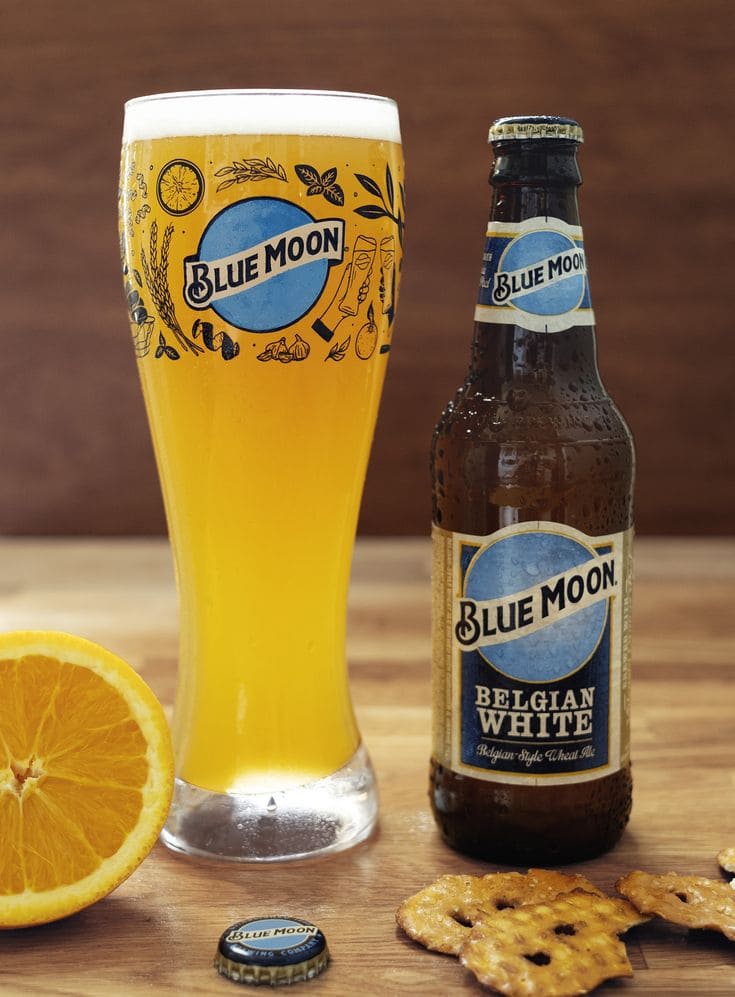
What does Heineken taste like?
Heineken is a popular lager beer with a distinctive yet mild bitterness. Unlike some other beers that are known for their complex flavor profiles, Heineken is a more straightforward beer. The tasting notes for Heineken include a strong bitterness, with hints of sweet corn or green apple. Interestingly, the flavor of Heineken can vary depending on whether you drink it from a can or a bottle.
What does Bud Light taste like?
Bud Light is a light beer with a simple flavor profile consisting of barley malt and rice, as well as American hops, to create a dry taste that leaves you wanting more – but not too much at once. It is not a beer for those who prefer their beers dark and rich, as it has a light and refreshing taste.
What does Modelo taste like?
Modelo Especial is a pilsner-style lager that may be light in color, but it is anything but boring. The delicate hop profile gives way to a rich palate with hints of honey, subtle malt, and maize, which is balanced by lively carbonation and a crisp finish.
What does Budweiser taste like?
Budweiser is a decent American lager with a low level of bitterness and carbonation. While the herbal taste is not very prominent, it has a slight presence, and the aftertaste is almost non-existent.
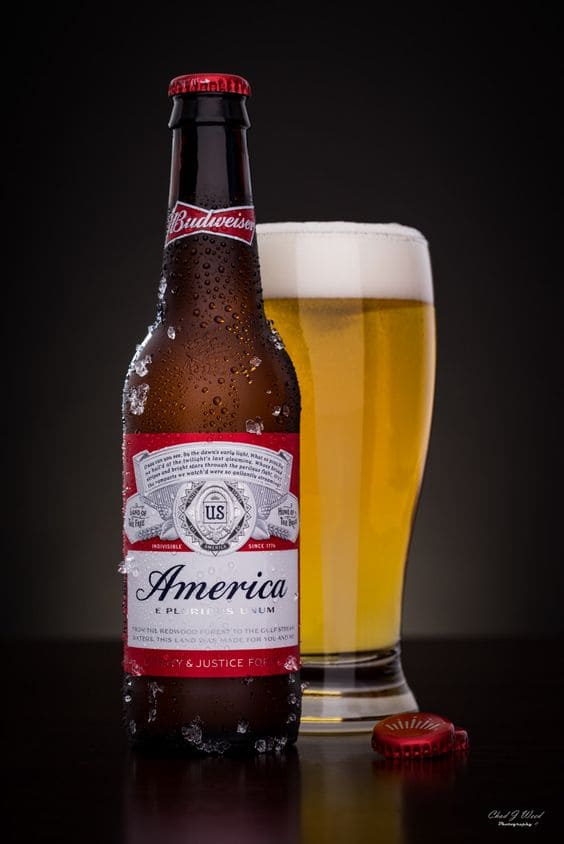
What does Stella Artois taste like?
Stella Artois is a classic Belgian lager with a golden hue and a floral, hoppy aroma. The fruity malty sweetness is well-balanced by a crisp hop bitterness, and the finish is soft and dry. The use of all natural ingredients gives Stella Artois a clean, crisp palate, with fresh aromas of pale malt offering a sweet herbal note and a lingering hoppy finish.
What does Coors Light taste like?
Coors Light has a light malt nose and a faintly sweet malt taste, balanced by a faint bitterness.
What does Coors Banquet taste like?
Coors Banquet Beer is a classic American lager with a sweet flavor profile and bright fruity notes that set it apart from other beers of this style. Along with the expected grain and corn flavors, there are also subtle hints of banana bread, making this beer much more than just your average “lawnmower beer”
What does Michelob Ultra taste like?
Michelob Ultra is a light-tasting beer with subtle citrusy and malt-like flavors. While it may not be a standout in terms of taste, it is not entirely tasteless. The beer has a smooth mouthfeel, is not too bitter or sour while drinking, and lacks a bitter aftertaste.
What does Yuengling taste like?
Yuengling is known for its rich amber color and medium-bodied flavor, with a subtle sweetness from the roasted caramel malt and a blend of cluster and cascade hops that give it a distinctive character. The taste is well-balanced, making it a true original and a favorite among beer enthusiasts.
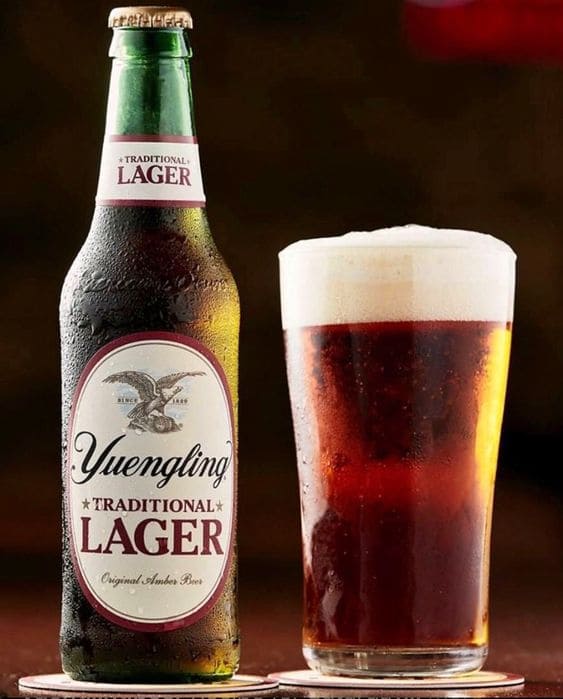
What does Miller lite taste like?
Miller Lite has a hop-forward flavor and a solid malt character that create a smooth and refreshing taste. It has a light to medium body and a crisp, clean finish that make it a popular choice for those looking for a light and easy-drinking beer.
What does Oktoberfest beer taste like?
Oktoberfest beers have a distinct flavor and aroma profile, with a biscuit-like or toasted-bread taste that is rich in malt and balanced by a clean hop bitterness. A slight sweetness adds depth to the flavor, making it a perfect beer to celebrate the autumn season.
What does Duff beer taste like?
Duff Beer is an American-style amber lager with a robust flavor profile. It has a noticeable roasted malt taste, with hints of caramel that add sweetness and complexity. This beer is perfect for those who enjoy a flavorful and satisfying amber lager.
Factors That Affect What Does Beer Taste Like
Several factors can affect the taste of beer, including:
Ingredients
The types of malt, hops, yeast, and water used in brewing can all affect the taste of beer. Different strains of yeast can produce different flavors, while the use of different types of hops can contribute to bitterness or fruity flavors.
- Malt: The type and amount of malt used can affect the sweetness, body, and color of the beer. Different types of malt can produce flavors ranging from caramel to chocolate to smoky.
- Hops: Hops are responsible for the bitterness in beer, but they can also contribute to the aroma and flavor. Different types of hops can produce flavors ranging from citrusy to floral to earthy.
- Yeast: Yeast plays a critical role in the brewing process, converting sugars into alcohol and carbon dioxide. Different strains of yeast can produce different flavors and aromas, such as fruity, spicy, or even funky.
- Water: The quality and mineral content of the water used in brewing can affect the taste of the beer. Hard water with a high mineral content can produce a crisp, dry finish, while soft water can result in a smoother, sweeter taste.
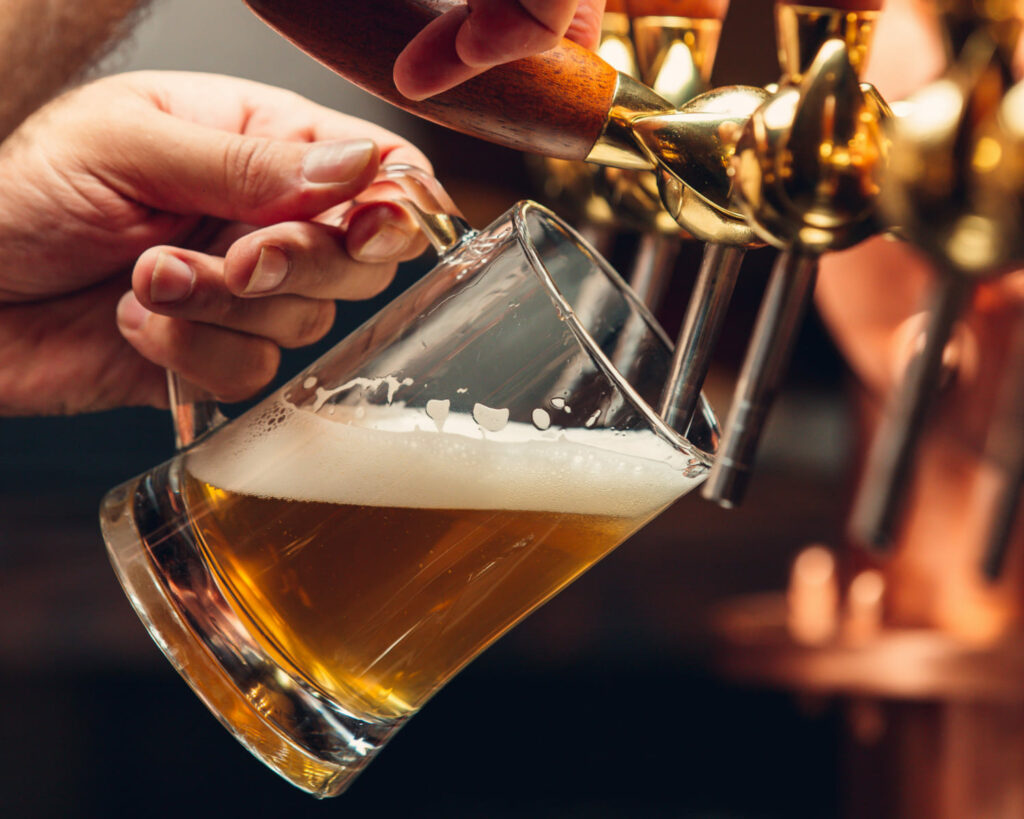
Brewing process
The way beer is brewed can also affect its taste. Factors such as the temperature at which the beer is fermented, the length of time it is aged, and the method of carbonation can all impact the flavor and aroma of the beer.
- Mash: The process of mixing malted grains with hot water to extract fermentable sugars. The temperature and length of time of the mash can affect the sweetness and body of the beer.
- Boiling: The boiling process is when hops are added to the mixture to impart bitterness and flavor to the beer.
- Fermenting: The process of converting sugar into alcohol and carbon dioxide. The temperature and length of fermentation can affect the flavor and aroma of the beer.
- Aging: The length of time a beer is aged can affect its taste, with some beers benefiting from extended aging to develop complex flavors and aromas.
Serving temperature
The temperature at which beer is served can also impact its taste. Generally, lighter beers are served colder while darker beers are served at warmer temperatures.
How temperature affects the taste of beer: Serving a beer too cold can mask its flavor and aroma, while serving it too warm can make it taste flat or unappealing. Finding the right temperature for a particular beer can enhance its taste and bring out its unique qualities.
Light
Exposure to light can cause the beer to develop a “skunky” flavor due to the interaction between the hops and light. This is why many beers are packaged in dark-colored bottles or cans to prevent light from reaching the beer.
Contamination
If beer is not properly cleaned and sanitized during the brewing or bottling process, it can become contaminated with bacteria or other microorganisms, which can alter the flavor and potentially cause illness.
The Difference Between Dark Beer And Light Beer
| Dark Beer | Light Beer |
| Roasted malts | Light malts |
| Deep color | Light color |
| Rich flavor | Mild flavor |
| Heavier body | Lighter body |
| Sweetness | Crispness |
| Often higher ABV | Lower ABV |
| Good with hearty foods | Good with lighter foods |
Reasons Why Beers Have Different Tastes
Let’s explore why beers have many different hay strange tastes at this point:
Why does beer taste like bread?
Beer can taste like bread due to the malted barley used in the brewing process. The process of malting involves allowing barley to germinate, which produces enzymes that break down starches into sugars. These sugars are then converted to alcohol during the brewing process, but some residual sugars may remain, giving the beer a bready or doughy flavor.
Why does beer taste like metal?
Beer can taste like metal due to the presence of certain minerals in the water used during the brewing process. Iron, copper, and zinc can all give beer a metallic taste, which can be undesirable. Brewers can treat their water or adjust their brewing process to avoid these flavors.
Why does beer taste like bananas?
Beer can taste like bananas due to the presence of certain yeast strains that produce a compound called isoamyl acetate. This compound has a fruity, banana-like flavor and aroma and is often found in Belgian-style beers, particularly those made with hefeweizen yeast.
Why does beer taste like vinegar?
Beer can taste like vinegar if it has become contaminated with acetic acid bacteria, which produce acetic acid (the main component of vinegar) during the fermentation process. This can be a sign that the beer has gone bad and should not be consumed.
Why does beer taste like water?
Beer can taste like water if it is brewed with a high proportion of water relative to other ingredients, or if it has been diluted. This can result in a thin, watery flavor that lacks complexity and depth.
Why does beer taste like weed?
Beer can taste like weed if it has been brewed with certain hops strains that contain terpenes, which are also found in cannabis. These terpenes can give the beer a distinct herbal or piney flavor and aroma that is often associated with cannabis.
Why does beer taste like blood?
Beer should not taste like blood. If beer has a metallic or bloody flavor, it may be a sign that it has become contaminated with bacteria or other microorganisms. It is important to store and handle beer properly to prevent contamination.
The Importance of Glassware
Using the right glassware for serving beer is an important factor that can enhance the drinking experience in a number of ways:
- Aroma: Different beer styles have different aromas, and the shape of the glass can affect how those aromas are perceived. A glass with a narrow opening can help concentrate the aroma, allowing the drinker to fully appreciate the beer’s unique scent.
- Flavor: The shape of the glass can also affect how the beer’s flavor is experienced. A glass with a wider mouth can allow for a fuller taste experience, while a narrower glass can help highlight specific flavor notes.
- Carbonation: The shape of the glass can also affect the carbonation of the beer. A wider glass can allow for more carbonation to escape, while a narrower glass can help preserve the carbonation and ensure a consistent taste experience throughout the drinking process.
- Appearance: The right glassware can also enhance the appearance of the beer, allowing the drinker to fully appreciate its color and clarity. This can add to the overall enjoyment of the beer-drinking experience.
- Tradition: Certain beer styles are traditionally served in specific types of glasses, and using the appropriate glassware can be a way to honor and respect the beer’s history and cultural significance.
Pairing Beer with Food
Pairing beer with food is a great way to enhance the flavors of both the food and the beer. Here are some tips on how to choose the right beer for your meal and some pairing suggestions for different types of beer:
- Consider the intensity of flavors: When pairing beer with food, consider the intensity of both the beer and the food. Lighter beers, such as lagers and pilsners, pair well with lighter dishes, while heavier beers, such as stouts and porters, pair well with heartier meals.
- Match flavors: Pair beers that have similar flavors with dishes that have similar flavors. For example, hoppy IPAs pair well with spicy foods, while malty beers, such as brown ales, pair well with rich, savory dishes.
- Contrast flavors: Alternatively, you can also pair beers that have contrasting flavors with dishes that have complementary flavors. For example, sour beers can cut through the richness of fatty foods, while sweet beers can balance out spicy dishes.
Some pairing suggestions for different types of beer include:
- IPA: Spicy foods, grilled meats, strong cheeses
- Pilsner: Seafood, salads, light dishes
- Brown Ale: BBQ, roasted meats, hearty stews
- Stout: Chocolate desserts, oysters, smoked meats
- Wheat beer: Citrusy salads, fish dishes, fruity desserts
- Porter: Barbecue, smoked meats, chocolate desserts
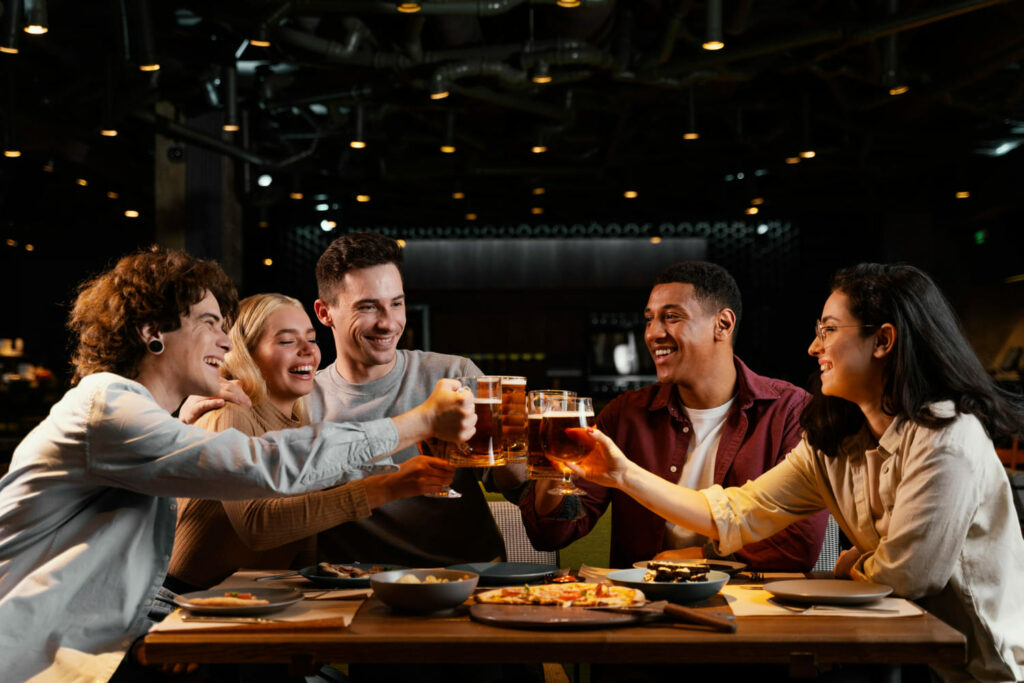
How to Taste Beer
Tasting beer is a great way to appreciate the nuances of different styles and flavors. Here’s the process of tasting beer and some tips for developing your beer palate:
- Look: Start by examining the appearance of the beer. Look at the color, clarity, and head. Take note of any unique characteristics that might be indicative of the beer’s style.
- Smell: Next, take a deep whiff of the beer. Smell for any aromas that might be indicative of the beer’s ingredients or style. Try to identify any specific scents, such as hops, malt, or fruit.
- Taste: Take a small sip of the beer and let it sit in your mouth for a few seconds. Pay attention to the taste, texture, and mouthfeel. Try to identify any specific flavors, such as sweetness, bitterness, or spiciness.
- Swallow: Finally, swallow the beer and note any lingering aftertastes or sensations. Consider how the beer finishes and how it might pair with different foods.
FAQs
Why do some people dislike the taste of beer?
The taste of beer is subjective, and some people may simply not enjoy the flavor. Additionally, certain factors such as genetics, cultural background, and personal preferences can all play a role in determining whether or not someone likes the taste of beer.
How do I know if I have a good beer palate?
Developing a good beer palate takes time and practice. Paying attention to the appearance, aroma, taste, and mouthfeel of different beers can help you develop your palate over time. Taking notes and comparing your tasting experiences with others can also help you identify patterns and develop your beer tasting skills.
Is it okay to drink beer straight from the bottle?
While it is okay to drink beer straight from the bottle, using a glass can enhance the drinking experience by allowing you to fully appreciate the appearance, aroma, and flavor of the beer.
What does flat beer taste like?
Flat beer has lost its carbonation, which can make it taste dull or lifeless. It may also taste sweeter or maltier than it did when it was carbonated.
Why does beer taste better in a glass?
Drinking beer from a glass can enhance the drinking experience by allowing you to fully appreciate the appearance, aroma, and flavor of the beer. The shape of the glass can also affect the way the beer smells and tastes.
What causes beer to foam?
Beer can foam due to the presence of carbon dioxide, which is created during the fermentation process. Pouring beer too aggressively can also cause it to foam.
Does beer taste like soda?
Beer and soda have different flavor profiles and are generally not considered similar in taste. While some beers may have sweet or fruity flavors, they are still distinct from the flavors found in soda.
What does beer taste like without alcohol?
Non-alcoholic beer can taste similar to regular beer, but with less alcohol content. The flavor profile may still include bitterness, sweetness, and other characteristics found in regular beer.
Does beer taste like pee?
No, beer should not taste like pee. If beer has a urine-like flavor, it may be a sign that it has become contaminated with bacteria or other microorganisms, which can alter the flavor and potentially cause illness.
Is it normal to not like beer?, answer short
Yes, it is normal to not like beer. The taste of beer is subjective and some people simply may not enjoy the flavor.
Conclusion
In conclusion, the answer to the question what does beer taste like is complex and multifaceted. Beer can taste sweet, sour, bitter, creamy, or malty, depending on the style and ingredients used in brewing. Factors such as the brewing process, serving temperature, and glassware can also play a significant role in determining the flavor of beer. Developing a good beer palate takes time and practice, but paying attention to the appearance, aroma, taste, and mouthfeel of different beers can help you appreciate the unique characteristics of each style. Whether you prefer a crisp pilsner or a rich stout, understanding the nuances of beer flavor can enhance your enjoyment of this beloved beverage.
I’m Chen Mina, from Vol de Nuit, who has a special passion for bartending, especially mixing wine, beer, and cooktail. Here you will find content about alcoholic beverages, I will bring you knowledge that few people know about this drink.

